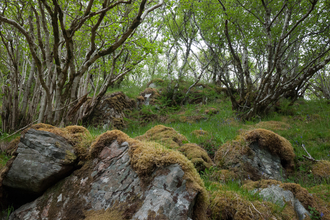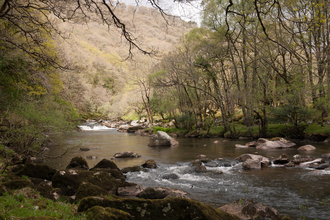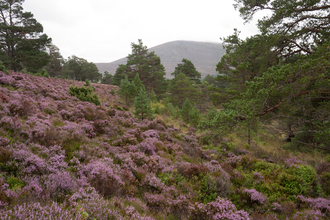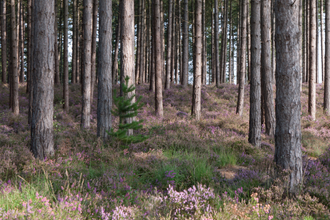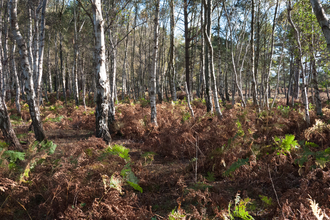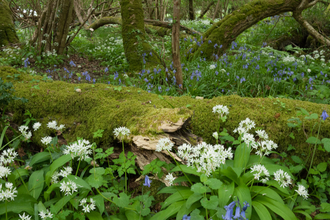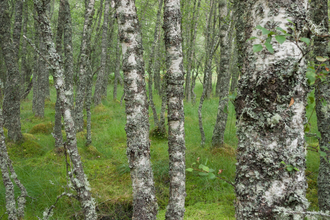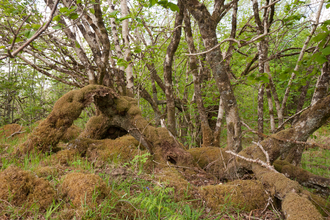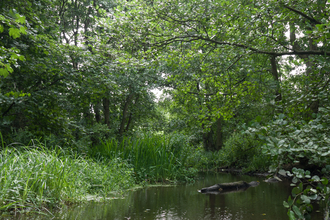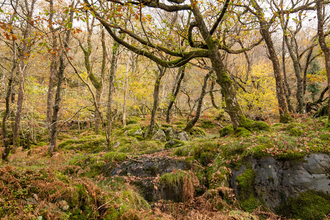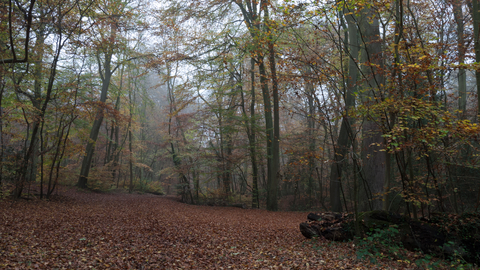
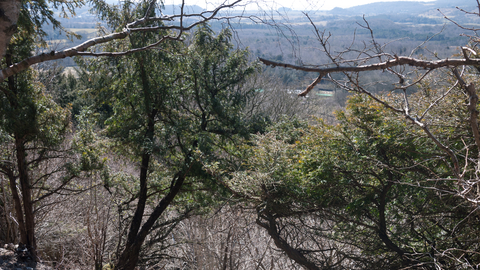
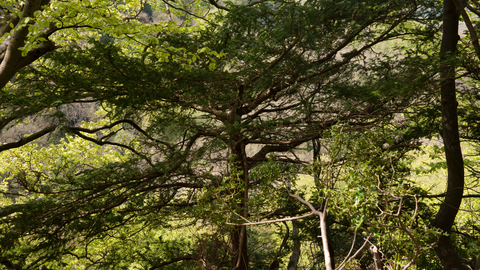
Beech and yew wood
What is it?
Towering stands of beech and yew wood can be found neatly parcelled on hill top plateaus, clinging to the sides of chalk downland, or sprawling in an unruly mix with lowland heathland. There are also beech plantations, some of considerable age. While other species are usually very limited (a consequence of the deep shade cast by the beech trees and the slow decay of its leaves), more chalky (calcareous) sites can hold some of our most rare and elusive orchids. Pollarded beeches growing adjacent to open habitats may be particularly rich in epiphytic lichens and rare beetles.
Pure yew woods (which are rare in Europe) are also found, particularly where the dry, shallow soils of steep slopes discourage other species. Here the dramatic forms of the yews themselves are the main focus – some live for more than a thousand years – and the woods are quite species poor. There may be a little ash, whitebeam or elder and sparse patches of dog’s mercury, while box is a feature in some localities. Yew woods are also found further north, where ash and elm may also be present and the flora begins to resemble that of upland mixed ash wood (with which it is sometimes grouped).
Why is it like this?
Beech was not an early coloniser after the last ice age, and is thought to have replaced other tree species (notably lime where this was reduced by livestock grazing and felling). Beech and yew wood can cope with a wide range of substrates, although the substrate influences its composition. On the chalks and limestones of the Chilterns, Downs and Cotswolds, ash and sycamore join beech in the canopy and yew is joined by whitebeam in the shrub layer. On the acid sandy gravels of the New Forest, High Weald and Thames Basin, oak becomes common and the ground flora is more heathy in character. Neutral, damp brown soils allow beech to gain its greatest stature and here it is often only accompanied by bramble and holly.
In the carboniferous and magnesium limestone country of northern England, yew groves are found on steep slopes and in ravines. On the most inaccessible sites, it may be primary woodland that has never been cleared. On the southern chalkland it is mostly secondary, and is dynamic – it can grow under the protection of juniper and hawthorn scrub when grazing levels decrease on chalk grassland, but it does not regenerate under its own shade, so gradually deteriorates, meaning that over time the boundaries shift.
Distribution in the UK
Although mainly limited to the warmer south and east of England, beech flourishes when planted further north, and the limit to this woodland type may be a result of habitat fragmentation impeding its spread, rather than any climatic limits. However, it is now colonising sites outside of its historic range and challenging our notions of habitat types. Pure yew wood reaches north Wales and the north of England. There are around 20,000 ha in the UK.
What to look for
Beech wood is famed for its saprophytes – species growing on decaying organic matter. Look in the leaf litter for fungi (chanterelles and boletes) and orchids (bird’s nest orchid and yellow bird’s-nest and a whole array of helleborines). Invertebrates can be hard to recognise, but look out for the distinctive yellow-ringed comb-horn, which breeds in rot holes in beech trees. The triangle spider spins a characteristic triangular web on yew branches.
Conservation
Historically, beech was used for turning, and yew for long bows – neither of which provide much of an economic incentive for conservation today. However, beech woods suffered less from clearance than other woodland types, although they were often replanted with conifers or non-native species. Urban growth is an issue for some sites and care will be needed to protect against increased trampling, disturbance and pollution. Beech is susceptible to drought and storm damage, so climate change is likely to have significant impact, while yew may become more geographically restricted. Today, conservation issues revolve around ecological functionality. Reducing the impacts of deer and grey squirrels will help with the slow deterioration caused by a lack of regeneration at some sites, while freeing up the boundaries of woodland by altering management on adjacent land would allow small-scale migration and rejuvenation.

